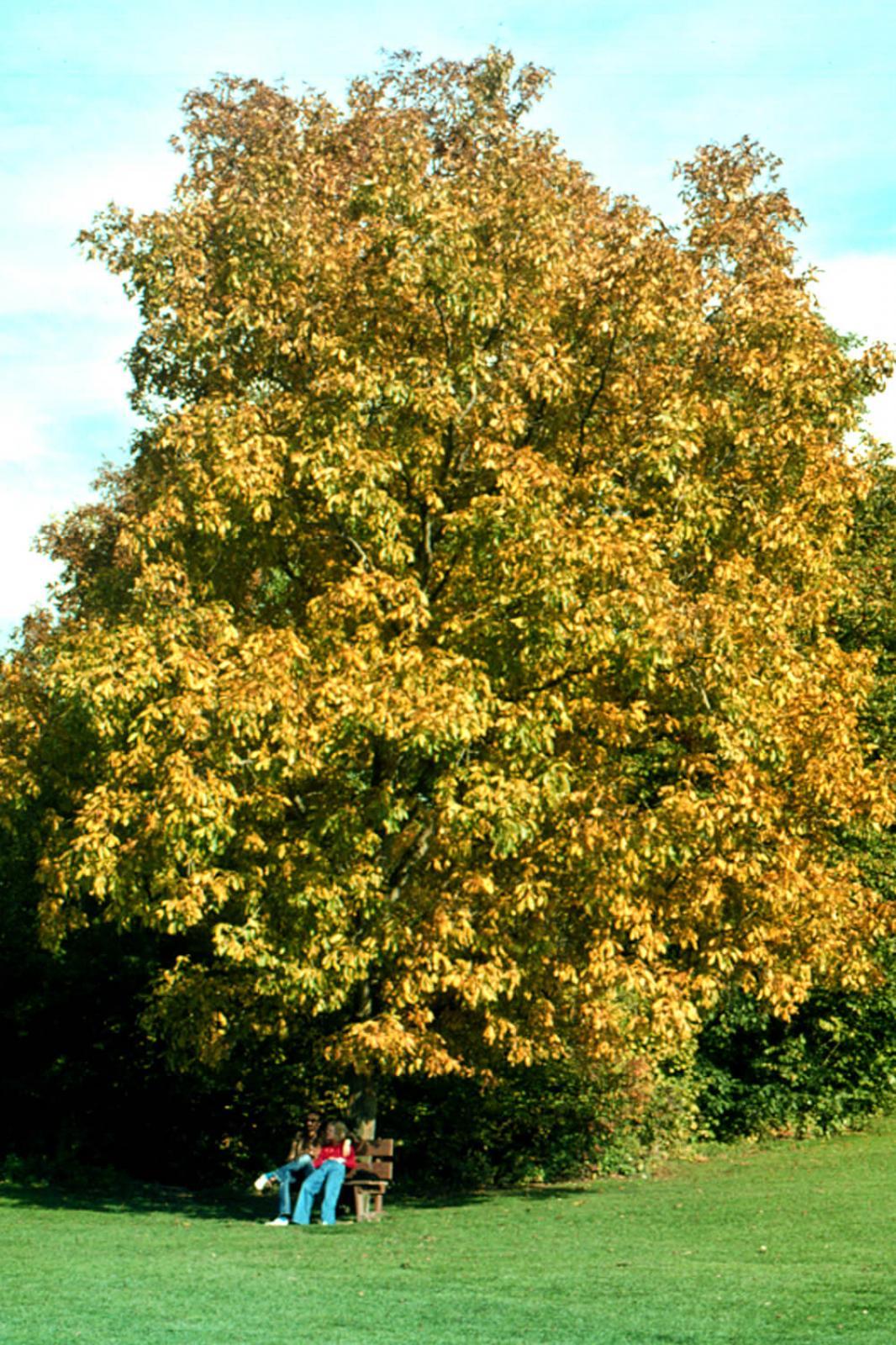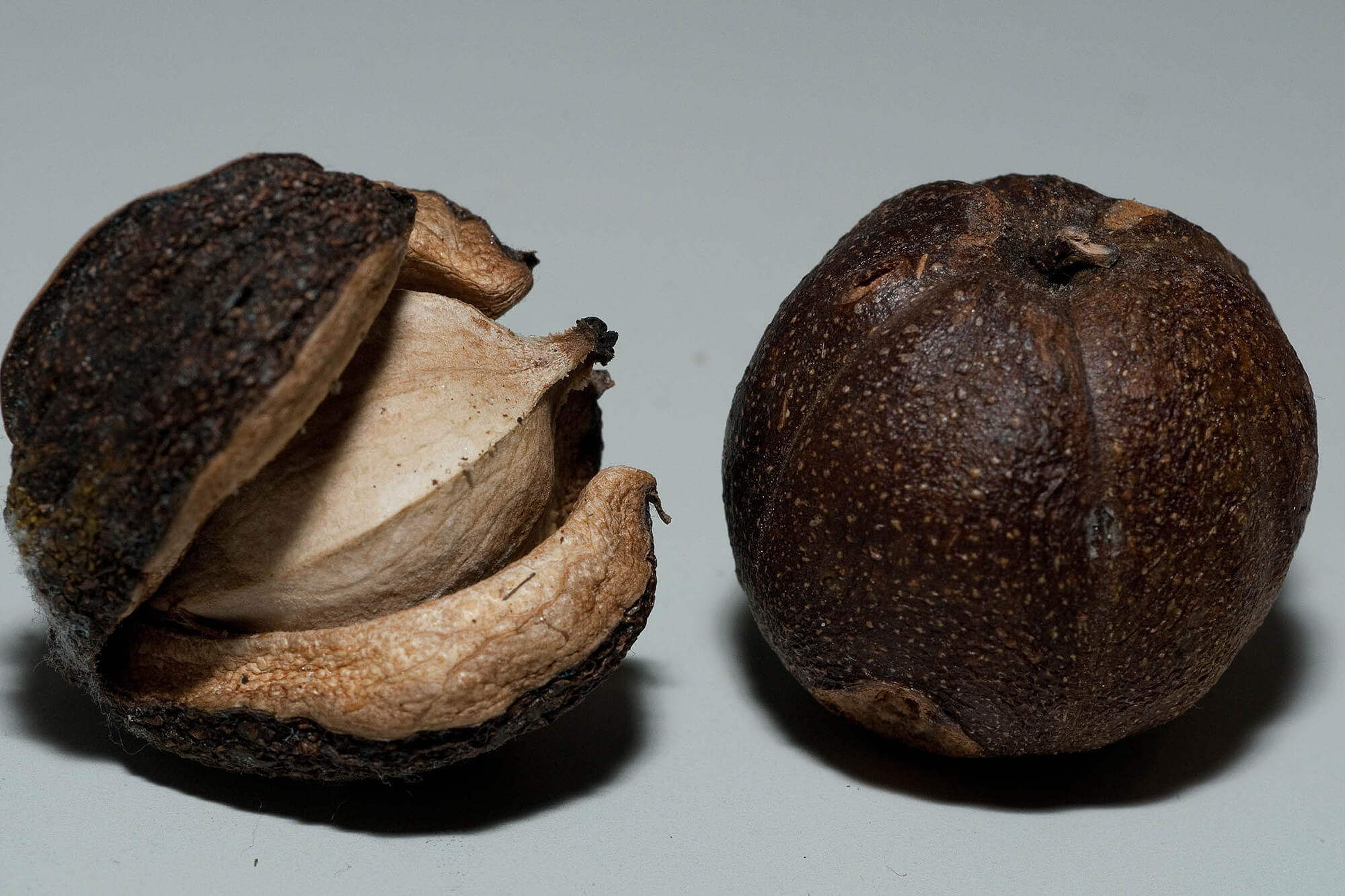December 15, 2011
List of urban-tolerant trees for nurseries now online

Few pests and diseases affect shagbark hickory.
Emerald ash borer (EAB) is destroying white and green ash in record numbers throughout North America. Market demand has dramatically declined at this stage of the EAB infestation. Norway maple is accused of naturalizing in many areas both in the U.S. and in Ontario, placing Acer platanoides on several invasive plant lists. Some research claims cultivars may not be invasive, but the popularity of Norway maples has declined because of the issue.
Finding alternative trees became a concern for nursery growers. This sparked the formation of the research group to develop a list of urban tolerant trees as good alternatives to ash and Norway maple. Information was gathered through surveys with industry groups and a literature search into urban tolerant trees. Through funding from the Farm Innovation Program, Landscape Ontario Growers' Sector Group initiated the research project to develop a list of urban-tolerant trees that could be offered to the Ontario landscape industry. The project team, led by Thelma Kessel of Lacewing Horticulture, included Sean Fox, assistant manager, University of Guelph Arboretum, Jennifer Llewellyn, OMAFRA nursery crops specialist, and Dr. Glen Lumis, Professor Emeritus, University of Guelph.
The 29 trees on the list are considered suitable for an Ontario urban setting, while encouraging species diversity. The research group feels the trees on this list have tolerance to urban situations, along with aesthetics and relative freedom from pests and diseases. The trees are similar to ash in size and form. Smaller specimens were included for sites where ash would be too large. Unlike today where a few specimens dominate the landscape, the group felt that a broad list of replacements will allow future urban forests to have a better opportunity to resist major pest infestations, and reduce the risk of future widespread problems.
Featured tree
Shagbark Hickory, Carya ovata
Like a shaggy dog, the more you get to know shagbark hickory, the more you will like it.Perhaps one of Ontario's toughest native trees, this species can often be found growing in dry, rocky conditions in natural areas. It is an important component of the oak-hickory forest for habitat and food source.
Shagbark hickory becomes a stately shade tree. It can reach 22 metres with a narrowly cylindrical shape and open branching. Carya ovata is interesting throughout the year. As the leaf buds unfurl, reddish bracts are revealed that appear as if flowers. In May, the showy male catkins bloom.
The shagbark hickory grows slowly, building an extensive root system that enables it to tolerate tough conditions, such as heat and drought on a wide range of soils. As demand for hickories increases, nursery growers will find techniques to overcome the challenges of transplanting this taproot species.
The name ovata describes the egg shape of the nut husk. The often-plentiful nuts are the choice food for wildlife, and most edible of the hickories. Hardy to zone 5 and perhaps zone 4, the shagbark hickory has few serious pests or diseases. The tree has some wonderful features, but it should be carefully located. It may be sensitive to deicing salt, and should not be planted in highly maintained turf areas. Dropping petioles, nuts, leaves and exfoliating bark may be regarded as a maintenance nuisance. Planted where it can develop in all its beauty, Carya ovata is a valuable contribution to the urban forest.
 One large tree can produce up to 630 litres of nuts.
One large tree can produce up to 630 litres of nuts.
Recommended 29 alternative trees
Acer campestre, hedge mapleAcer x freemanii, Freeman's maple
Acer ginnala (A. tataricum subsp. ginnala), Amur maple
Acer platanoides, Norway maple only cvs.: 'Columnare', 'Crimson King', 'Globosum', 'Royal Red'
Acer triflorum, three flowered maple
Aesculus flava (octandra), yellow buckeye
Amelanchier spp, serviceberry
Carya cordiformis, bitternut hickory
Carya ovata, shagbark hickory
Celtis occidentalis, hackberry
Fraxinus quadrangulata, blue ash
Ginkgo biloba, ginkgo
Gleditsia triacanthos var. inermis cvs, honeylocust
Gymnocladus dioica, Kentucky coffeetree
Maclura pomifera, Osage orange
Malus spp./cvs., crabapple
Ostrya virginiana, ironwood
Phellodendron amurense and/or sachalinense, Amur corktree
Pyrus calleryana cvs., Callery pear
Quercus bicolor, swamp white oak
Quercus ellipsoidalis, northern pin oak
Quercus macrocarpa, bur oak
Quercus muehlenbergii, chinquapin oak
Quercus shumardii, shumard oak
Syringa reticulata and/or pekinensis spp./cvs., Japanese tree lilac
Taxodium distichum, baldcypress
Tilia americana, basswood
Tilia cordata, littleleaf linden
Ulmus americana, American elm
As of November, factsheets are available for each tree with specific data and photographs. The information is accessible at www.landscapeontario.com/trees-for-urban-landscapes.

